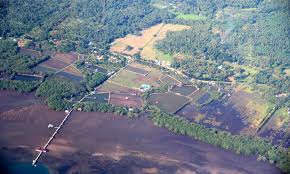Topography. Generally rugged, with 70 percent mountains and hills. The rest are coastal plains and valleys traversed by brooks and rivers that provide adequate underground water.
Bounded on three directions by bodies of water, Misamis Occidental is known to its neighbors for beautiful waters and bountiful fish and seafood for export. In fact, Layawan River in Oroquieta City is a constant awardee of the national environmental recognition, Gawad Pangulo sa Kapaligiran, as Cleanest Inland Body of Water. But there is one other place that is drawing tourists into this coastal yet rugged province – the city of Tangub, which comes alive especially at Christmas.






